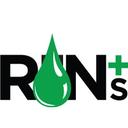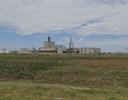In situ biodiesel testing technology presented at AOCS meeting

May 8, 2014
BY Biodico Inc.
On May 4, Biodico’s Vice President of Research and Development Trey Teall presented the results of a five-year research project to the Methods Roundtable & Uniform Methods Committee at the 105th American Oil Chemists’ Society Annual Meeting & Expo in San Antonio, Texas. The research project focused upon the use of Fourier Transform Near-infrared Spectroscopy to provide real-time in-situ analysis of the biodiesel production process as an alternative to conventional ASTM biodiesel methodology.
ASTM D6751 protocols require the use of techniques that are relatively time-consuming and provide data about the state of the biodiesel reaction kinetics after the fact. For example, the use of gas chromatography to determine mono, di and tri glycerides, and free glycerin will take a trained technician more than 45 minutes. It requires that a sample be drawn, reacted (silylated) and run through the GC; and the results indicate what the reaction state was, instead of what it is in real time. In contrast, Teall’s research has shown that the use of FT-NIRS can be conducted with sensors imbedded into various production process streams and provide highly accurate near-instantaneous data about the state of the reaction. It can also detect low level contaminants to ensure that finished biodiesel meets the requirements of ASTM D6751 for finished biodiesel.
Advertisement
The research project was conducted over a five-year period and is ongoing. It is partially funded by two separate grants from the California Energy Commission, and involves collaboration with the Naval Facilities Engineering and Expeditionary Warfare Center, California Polytechnic University at San Luis Obispo, University of California Santa Barbara, and Marquette University. To build the reference tables needed for this project, more than 1,700 spectra were gathered using triplicate samples and 16 referenced scans. The result is a precise method for determining the content of water; free fatty acids; biodiesel; glycerin; mono, di and triglycerides; methanol; saturated, monounsaturated and polyunsaturated fatty acid chains in oils and finished biodiesel; cloud point; oxidative stability; and cetane.
The reference tables also enable “fingerprinting” of mixed feedstocks and the resulting biodiesel. For instance, a feedstock composed of various percentages of palm oil, soybean oil and used cooking oil can be characterized both at the feedstock and finished biodiesel stage. Ongoing research is being conducted to establish the same percentages in various blends of biodiesel with petroleum diesel even at very low level blends. This will enable determination of the feedstocks used to make biodiesel even in blended biodiesel, and will provide confirmation of feedstock content claims made to obtain RINs and LCFS certifications.
Advertisement
“We are very excited about the results of this research,” Teall said. “As part of the AOCS process, we will be conducting round robin testing to obtain peer reviewed independent confirmation of our test results. Based upon our own confidence in the research, we have already imbedded FT-NIRS sensors and the reference table into our automation system for a 10 MMgy biodiesel plant in the Central Valley of California. This enables programmable logic control systems to utilize real-time data to truly automate biodiesel production. Some ‘automated’ systems are preprogrammed like a washing machine, and they respond the same regardless of feedstock composition and other reaction variables. With FT-NIRS, mixed feedstocks can be used, and the reaction kinetics are automatically adjusted throughout the entire process in response to essential variables. The results are much faster throughput and greater quality control with the same reactors. A conventional system can achieve up to a three-fold increase in production by retrofitting with FT-NIRS, the reference tables and automation. In-situ monitoring, extensive reference data and direct feedback to our automation system is key. We are developing the same technology to monitor and control renewable cogeneration systems that provide 100 percent of the heat and power requirements for a biodiesel production facility. This includes anaerobic digestion of mixed substrates with glycerin bottoms, gasification of agricultural waste with glycerin bottoms, and solar combined heat and power. These are all being demonstrated at our Red Rock Ranch facility adjacent to the Naval Air Station in Lemoore, California.”
Biodico is a privately held company that builds, owns and operates sustainable biorefineries, conducts research, development, and validation studies with the U.S. Navy, and collaborates with strategic joint venture partners to implement technology transfer and new initiatives. The company and its management have been pioneers in the industry for the past 21 years, with an emphasis on using advanced, patented and proprietary technologies for the sustainable multifeedstock modular production of next-generation biofuels and bioenergy.
Related Stories
Biodiesel capacity in the U.S. and Canada dipped slightly stable in 2024, with several renewable diesel producers reporting headwinds and lower margins alongside a drove of SAF projects in various stages of development.
The IEA’s Task 39 group has new research regarding the development and status of the sustainable aviation fuel industry.
The U.S. EPA on Nov. 16 released updated RIN data, reporting that nearly 2.11 billion RINs were generated under the RFS in October, up from 1.81 billion generated during the same month of last year.
Conestoga to host SAFFiRE cellulosic ethanol pilot plant
Conestoga Energy and SAFFiRE Renewables LLC announced on Nov. 16 their agreement for Conestoga to host SAFFiRE’s cellulosic ethanol pilot plant at Conestoga’s Arkalon Energy ethanol facility in Liberal, Kansas.
Officials at Calumet Specialty Products Partners L.P. discussed the company’s proposed plans to boost sustainable aviation fuel (SAF) production at its Montana Renewables biorefinery during third quarter earnings call, held Nov. 9.
Upcoming Events










